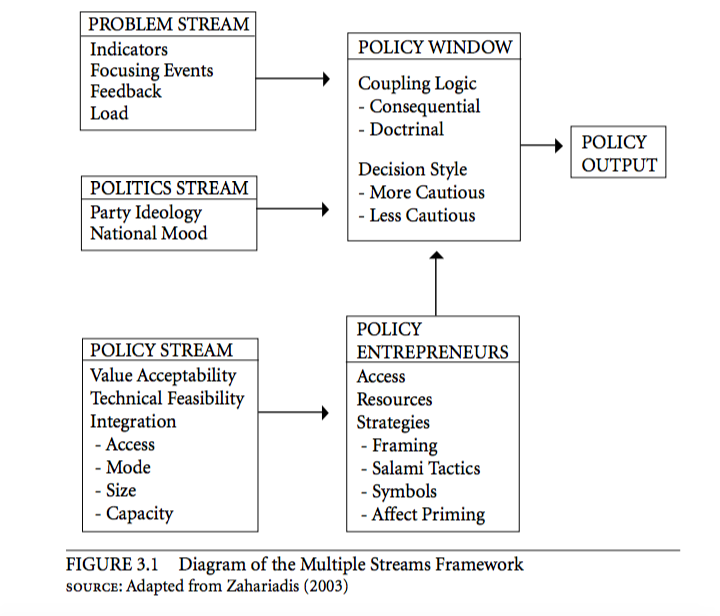Home | Overview | Schedule | Links
EVR 2861
Introduction Environmental Policy
Session Five
Multiple Streams Approach

Note:
This is also a challengiong reading that might go best by watching the videos first and then doing the reading).
Reading:
Zahariadis, Nikolaos (2007) "The Multiple Streams Framework: Structure, Limitations, Prospects," In Paul A. Sabatier's (Ed) Theories of the Policy Process. Cambridge, MA: Westview Press, p. 65-92.
Video: Multiple Stream Approach: Introduction; Multiple Stream Approach: Application
Homework:
- In this week's reading from Zahariadis (2007) he develops a "multiple streams framework" that is in part based upon the rational choice approach of economist Herbert Simon (1983) who claims a good rational choice theory asks three questions. What are those questions and generally speaking how does Zahariadis approach his framework?
- What is the importance of "level and unit of analysis," "ambiguity," and "temporal order" to what Zahariadis' framework refers to as a "view from above"?
- The multiple streams framework is based upon three basic assumptions: (1) "Individual Attention or Processing Is Serial, Systemic Attention or Processing Is Parallel," (2) "P olicy Makers Operate under Significant Time Constraints;" (3) "The Streams Flowing through the System Are Independent" (Zahariadis, 2007 p. 68-69). Explain what Zhariadis is talking about in regard to each of these assumptions.
- Zhariadis's "multiple streams framework" is built around 5 structural elements: problems, policies, politics, policy windows, and policy entrepreneurs (Zahariadis, 2007 p. 70). Discuss each element's contribution to the framework.
- Below is a diagram illustrating the Multiple Streams Framework. Based upon the video and your readings do your best to describe how the framework functions.
